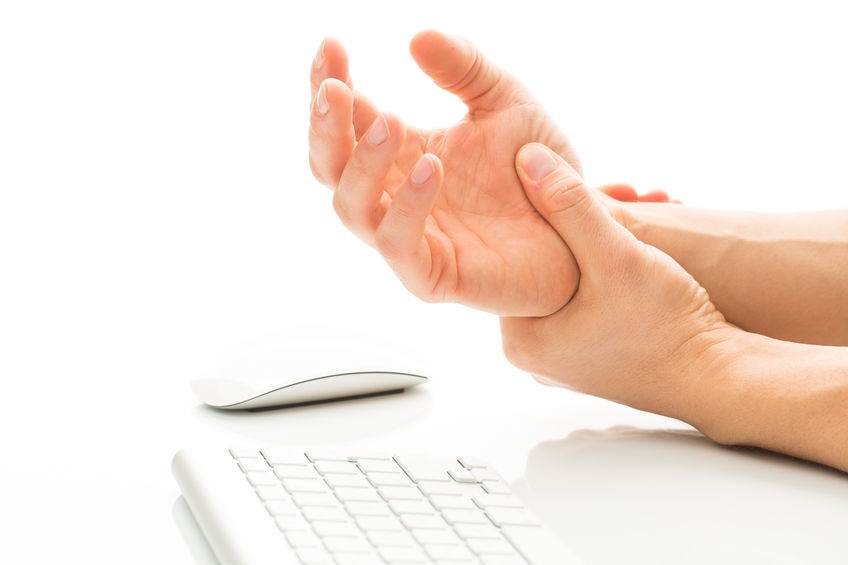What is arthritis?
Arthritis is a common condition that causes pain, stiffness and swelling in the joints. The effects are invisible, but it can affect all parts of the body, making the most basic movements, like sitting, walking, standing or gripping, terribly painful.
‘78% of people with arthritis experience pain every day’
There are more than 100 different types of arthritis, (the two main types being osteoarthritis, rheumatoid arthritis) and symptoms vary from person to person, fluctuating in severity. However, there are some common indicators that many arthritis sufferers experience.
Think you have arthritis?
Check your symptoms. Below are the most common symptoms of arthritis: • Fatigue • Restricted movement of the joints • Joint pain, tenderness and stiffness (particularly in the early morning) • Inflammation in and around the joints • Warm, red skin over your joint • Weakness and muscle wasting • Weight loss • Mild fevers or night sweats • Skin rashes.
The above symptoms are not solely specific to arthritis however, so it is extremely important to visit your GP if you experience any unusual swelling, pain or fatigue. Your doctor will be able to determine the type of arthritis you have, or give you effective advice in how to aid your personal symptoms if another condition is determined.
Don’t ignore it… what can you do?
Physical therapy and regular exercise will help to strengthen muscles and ease stiffness caused by arthritis. Aim for something manageable, using a combination of stretching, strength training and fitness exercises, and taking rests when necessary. Low impact exercises such as walking, cycling, aqua aerobics and swimming can help to maintain strength and stamina without putting too much strain on your body. Aids, such as a walking stick can take pressure off your joints. Here are some more detailed exercise guidelines for specific conditions such as osteoarthritis, rheumatoid arthritis, juvenile idiopathic arthritis (JIA), ankylosing spondylitis, osteoporosis, and back pain.
Acupuncture and massage are treatments that many people use to ease anxiety, soothe sore joints and muscles, or aid sleep. Tiffany Field, PhD, director of the Touch Research Institute at the University of Miami School of Medicine conducted a variety of studies regarding the benefits of massage on people with arthritis. In both Field’s and other recent studies, it shows that regular massage led to improvements in pain, stiffness, range of motion, handgrip strength and overall function of the joints.
Here’s why…
Massage lowers the body’s production of cortisol (the stress hormone), and boosts production of serotonin, which improves your mood. It is a popular way to ease arthritis symptoms, however please consult your doctor if you have any of the following symptoms.
- Severe osteoporosis
- High blood pressure
- Fever or a skin rash
- Damaged or eroded joints
- Varicose veins
- Flare of inflammation
Each person is unique and if you decide to try complementary therapy its effectiveness might be judged by whether you feel better and if measurable improvements are felt in your condition or general well-being.
Contact Sense for a free quote and more information or see our prices here.
Arthritis in the Workplace
EMPLOYERS: Arthritis is a major workplace health issue, causing 30.8 million sick days every year. The effects are unseen, making the impact of such a serious condition even more distressing. Arthritis sufferers can feel isolated and afraid to be open about their condition in the workplace due to possible discrimination or loss of work.
By understanding how it affects your staff, you will be able to create a healthy, supportive and productive work environment, impacting lives for the better. Try considering the following to help relieve their pain and stress:
- Providing office massage at the work place
- Holding wellness days in the office
- Allowing flexible hours, or working from home
- Providing special equipment, such as back rest and/or foot support, specialised office chairs etc.
- Help with travel (to and from work)
- Swapping certain tasks between colleagues
- Allowing time off to attend appointments
EMPLOYEES: There are many alternatives to full time work if arthritis is impacting your job. Some employers are happy to allow individual staff members more flexible hours, or to partake in a job-share, in which two employees share the responsibilities of one full time job. Part-time work and self-employment are also viable ways to work around your arthritis, so it doesn’t become a burden in your life.
Know your rights. Your employer must not ask you questions about your health or disabilities during the recruitment process, unless your condition will prevent you from doing a vital element of the job, or will present a health and safety risk to yourself or your colleagues.
Don’t be afraid or embarrassed to disclose information about your arthritis, as this only helps your employer to support you. Remember, you can only be guaranteed protection by the Equality Act if your employer knows about your arthritis.
Caring for Loved Ones with Arthritis
By understanding more about arthritis and your loved ones individual condition, you can help to care for them and relieve any suffering. Talk with them, be patient, and learn to recognise when their symptoms are bad, as they may need extra support.
Call Arthritis Research UK now on their new helpline: 0800 5200 520 Open Mon-Fri 9am-8pm, to receive free information, help and advice on your (or your loved one’s) type of arthritis.
